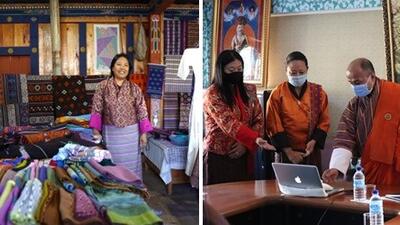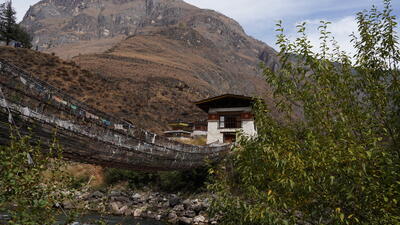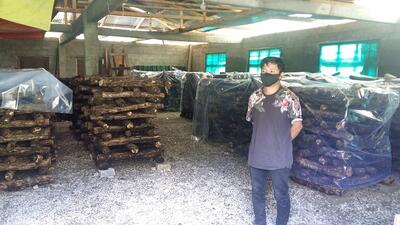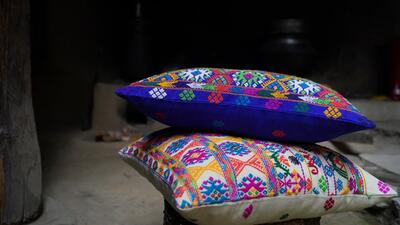Bhutan: A model for sustainable tourism development
Bhutan’s long-term strategy of controlled tourism with a focus on sustainability and quality has secured the country’s reputation as an exclusive and distinctive destination while ensuring the long-term sustainability of the industry and its contribution to the economy.
Bhutan has a clearly established framework for the development of tourism underpinned by the country’s Gross National Happiness (GNH). Tourism was introduced to Bhutan in 1974 as part of a visionary modernization and economic development plan introduced by Bhutan’s former King, Jigme Singye Wangchuck.
Aware that an unrestricted flow of tourists could negatively impact Bhutan’s pristine environment and unique culture, the government adopted a policy of ‘high-value, low-volume’ tourism in order to control the type and quantity of tourism right from the start.
‘The principle of high-value, low-impact tourism development, guiding tourism’s growth in Bhutan, is highly commendable and has undoubtedly contributed to the unique tourism brand of this country,’ said the World Tourism Organization (UNWTO) Secretary-General, Mr. Taleb Rifai, during an official visit to the country in January 2011.
So far, the government’s objective of maximizing foreign exchange earnings while minimizing the potentially adverse cultural and environmental impacts of tourism has paid off. The number of tourist arrivals has increased from just 287 in 1974 to close to 41,000 high-end tourists in 2010. There was also a 56% increase on 2009 figures in high-end arrivals from neighbouring countries, especially India, highlighting the importance of the regional market. Demonstrating the resilience of the sector, these figures were achieved despite events such as ash clouds in Europe and unstable political situations in the major gateways to Bhutan such as Bangkok.
Conservative figures by the Tourism Council of Bhutan estimate tourism’s contribution to GDP at US$ 90 million in 2010. It has also contributed to employment and created income opportunities through the development of locally owned and operated private-sector enterprises. There are now some 21,000 people employed directly and indirectly in tourism, and an increasing number of Bhutanese entrepreneurs are also investing in the sector. Close to 80% of Bhutan’s 700,000 inhabitants live in rural areas and most are engaged in the agricultural sector; but tourism has contributed to earnings from tourist transport, portage and the promotion of indigenous handicrafts.
‘For a small landlocked country like Bhutan, tourism plays a very important role in generating employment opportunities and revenue. It is second only to hydropower in terms of revenue generation,’ says Ms. Chhimmy Pem, the Head of Marketing and Promotion at the Tourism Council of Bhutan.
One of the key factors in the success of Bhutan’s tourism strategy has been the privatization of the industry. Until 1991, the Bhutan Tourism Corporation, a quasi-autonomous and self-financing body, implemented the government’s tourism policy, and all tourists came as guests of the Corporation. The Corporation, in turn, operated the transport services and nearly all the hotels and accommodation facilities.
The Tourism Council was established under the Ministry of Trade and Industry and the Department of Tourism with the primary responsibility of developing new tourism growth opportunities, undertaking research, protecting tourism assets and its impact on the environment, and managing the administration of visa and trekking permits.
Bhutan’s main tourism attractions are its traditional culture and way of life, its religious festivals, historic monuments and its pristine environment. Protecting nature and culture is part of the Bhutanese value system and is an important aspect of the traditional way of life in Bhutan, and its tourism policy reflects these concerns. The policy of imposing a US$ 200 per person per day tariff (including a US$ 65 royalty charged by the government plus food, accommodation, local transport and guides) has succeeded in providing a source of government income for education, health and building tourism and transport infrastructure, while at the same time making tourism in Bhutan an exclusive and distinctive experience.
The Tourism Council of Bhutan works in close cooperation with the Association of Bhutanese Tour Operators, the Hotel Association of Bhutan and the Guide Association of Bhutan to establish a channel for closer and more effective collaboration between the tourism industry and the Department of Tourism. It also ensures that the interests of the private sector are represented in developing tourism in a sustainable and responsible manner. The government encourages initiatives to enable the private sector to provide value for money to their clients. For example, new luxury hotels, the upgrading of existing hotels and foreign direct investment are encouraged through tax and fiscal incentives.
With ecotourism being the fastest growing market in the tourism industry in general and with the strength of the country’s natural assets, Bhutan has focused on strategies to promote and develop its ecotourism and nature -based tourism.
To overcome the industry’s biggest challenges – accessibility and seasonality – the Tourism Council of Bhutan is working with the national airline, Drukair, to increase the frequency of flights, improve connectivity, add more aircraft to its fleet, and build three additional airports to meet increasing demand. The Council is also working with hotel and tour operators to promote Bhutan as a year-round destination.
For further information visit www.tourism.gov.bt.









